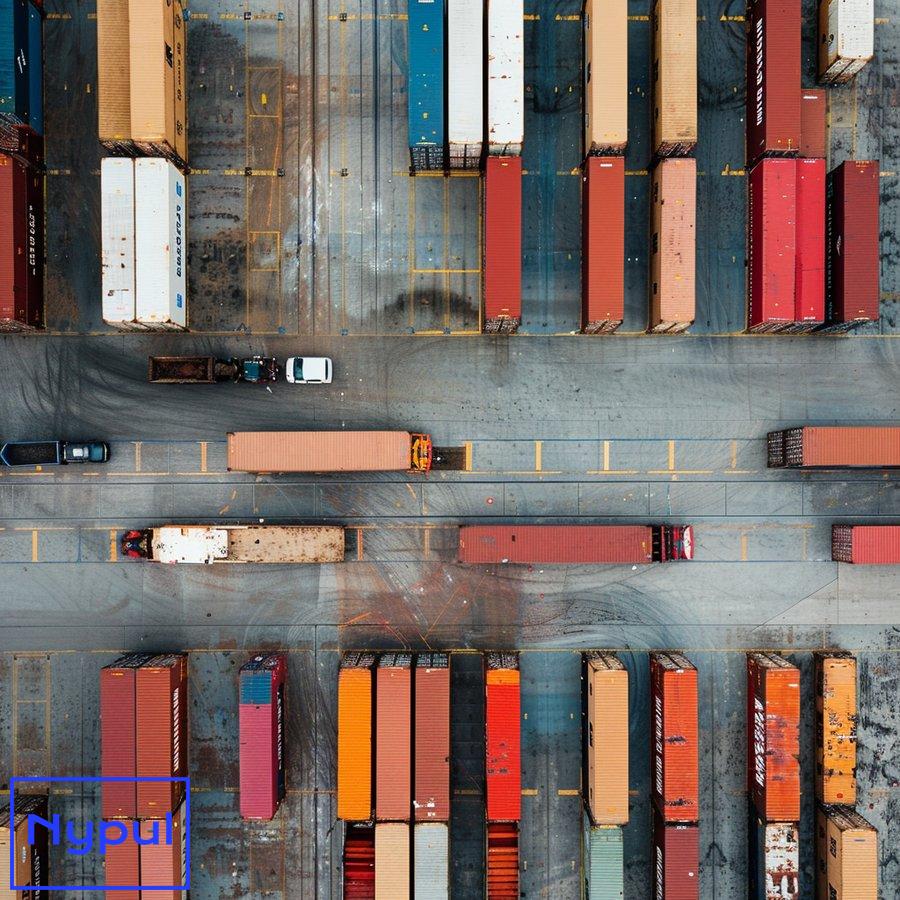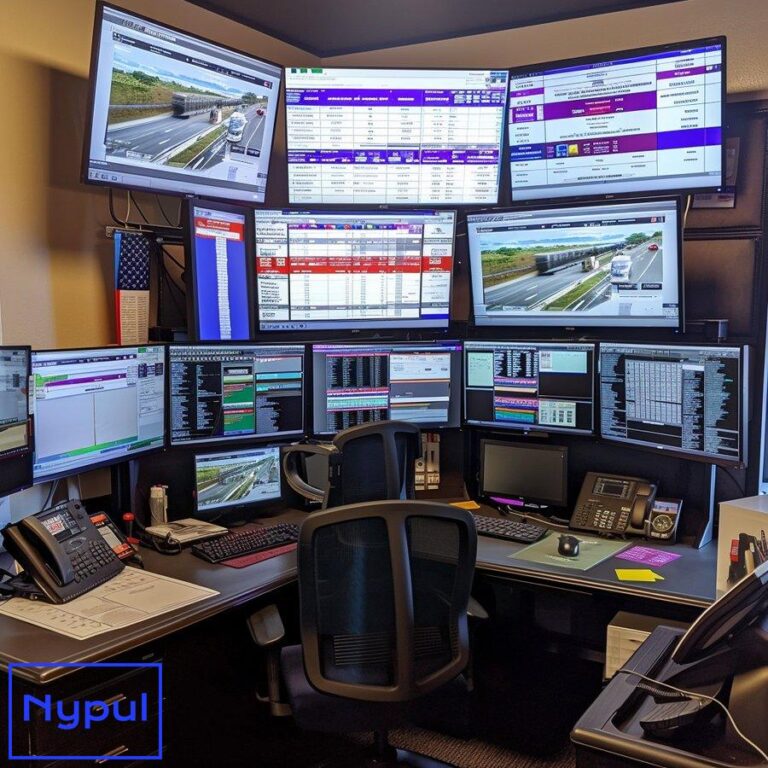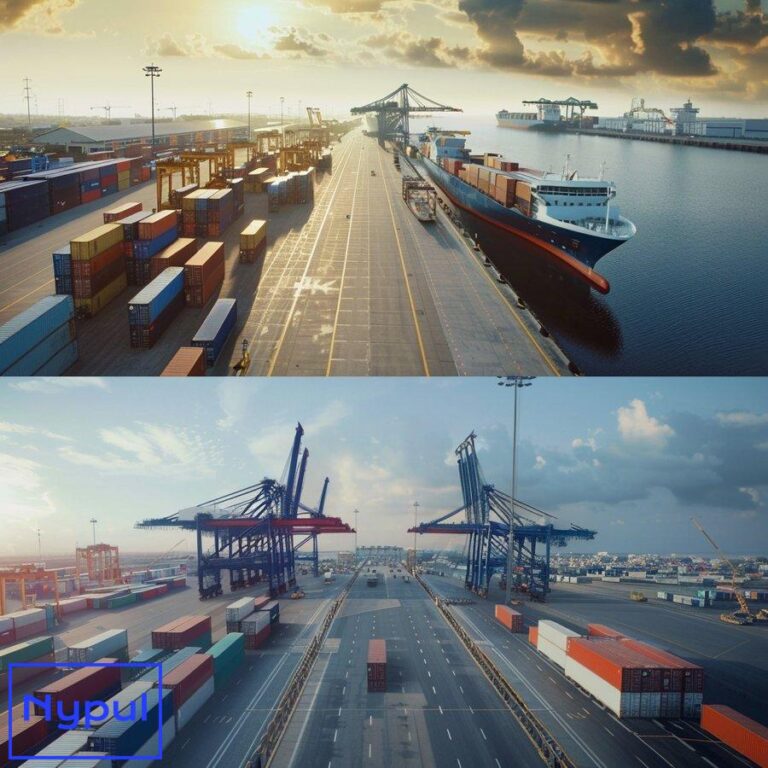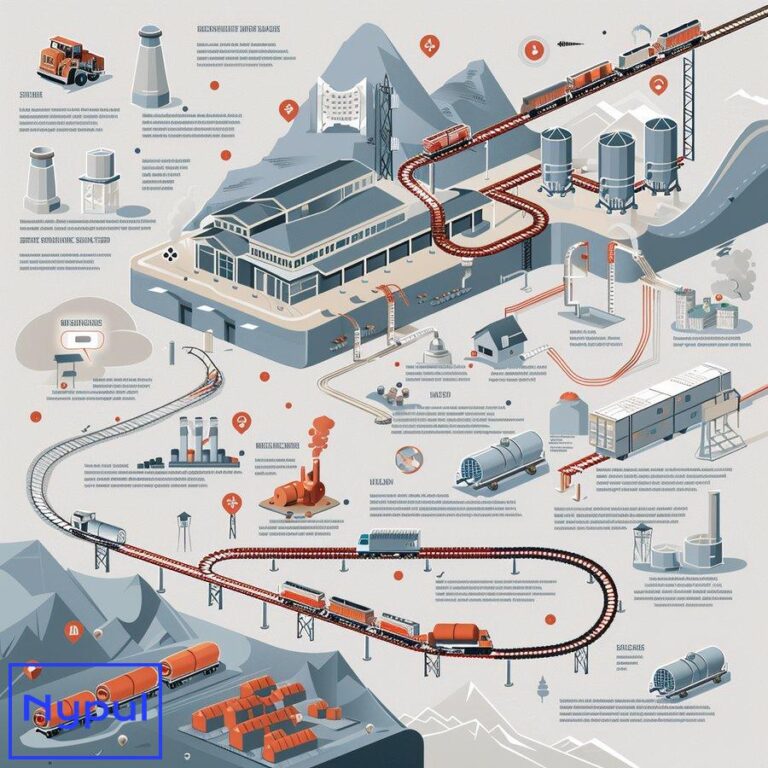What Is a Container Chassis
A container chassis is a specialized trailer designed to transport shipping containers overland. It serves as a critical component in the logistics and supply chain industry, enabling the movement of freight from ports to distribution centers or directly to customers. The chassis itself is a framework that supports and secures the container, allowing for efficient transportation without the need for additional loading and unloading equipment.
Container chassis are typically constructed from durable materials such as steel, ensuring they can withstand the rigors of heavy loads and rough road conditions. They come equipped with various features that enhance their functionality, including twist locks for securing containers, air brakes for safety, and sometimes even adjustable height settings to accommodate different container sizes.
Understanding what a container chassis is and how it operates is essential for logistics professionals, freight forwarders, and anyone involved in the transportation of goods. The efficiency of supply chains heavily relies on these trailers, making them indispensable in modern logistics.
What Are the Different Types of Container Chassis?

Container chassis can be categorized into several types based on their design and intended use. Each type serves specific logistical needs, making it crucial to select the right chassis for the task at hand. Below are some common types of container chassis:
Standard Chassis
Standard chassis are designed to carry standard ISO shipping containers, typically 20-foot or 40-foot containers. They feature fixed dimensions and are primarily used for transporting containers between ports and inland destinations.
Extendable Chassis
Extendable chassis can be adjusted in length to accommodate different container sizes. This flexibility allows them to transport both 20-foot and 40-foot containers efficiently. Extendable chassis are particularly useful in operations where varying container sizes are common.
Gooseneck Chassis
Gooseneck chassis have a unique design that allows for better maneuverability. The gooseneck extends from the front of the chassis, providing a lower center of gravity and improved stability when transporting heavy loads. This type is often used for transporting specialized cargo or when navigating tight spaces.
Flatbed Chassis
Flatbed chassis are designed without side walls or a top cover, allowing for easy loading and unloading from any side. They are versatile and can carry various types of cargo beyond standard shipping containers, making them suitable for diverse logistical operations.
Reefer Chassis
Reefer chassis are specifically designed to transport refrigerated containers (reefers). They come equipped with electrical connections to power the refrigeration units within the containers, ensuring that temperature-sensitive goods remain fresh during transit.
| Type of Chassis | Description | Ideal Use Case |
|---|---|---|
| Standard Chassis | Fixed dimensions for standard ISO containers | Port-to-inland transport |
| Extendable Chassis | Adjustable length for varying container sizes | Mixed-size container operations |
| Gooseneck Chassis | Lower center of gravity for improved stability | Heavy or specialized cargo |
| Flatbed Chassis | Open design for versatile loading options | Diverse cargo types |
| Reefer Chassis | Equipped for refrigerated containers | Temperature-sensitive goods |
Selecting the appropriate type of container chassis is essential for optimizing logistics operations. Each type has its advantages and limitations, which can significantly impact efficiency and cost-effectiveness in transportation.
What Key Features and Specifications Should You Know?
When considering a container chassis, several key features and specifications should be taken into account. These attributes can significantly influence performance, safety, and compatibility with various shipping containers.

Weight Capacity
The weight capacity of a container chassis is one of its most critical specifications. Most standard chassis can handle loads ranging from 30,000 to 45,000 pounds (13,600 to 20,400 kg). Ensuring that the chosen chassis meets or exceeds the weight requirements of your cargo is vital for safe transportation.
Dimensions
The dimensions of a container chassis must align with those of the shipping containers being transported. Standard lengths include 20 feet (6.1 meters) and 40 feet (12.2 meters), but extendable models may vary in length to accommodate different sizes.
Material Construction
Container chassis are typically constructed from high-strength steel or aluminum alloys. Steel offers durability and strength but adds weight. Aluminum is lighter but may not provide the same level of strength under heavy loads. Understanding these materials can help determine which option is best suited for specific logistical needs.
Braking System
The braking system on a container chassis plays a crucial role in safety during transit. Most modern chassis are equipped with air brake systems that provide reliable stopping power under heavy loads. Regular maintenance checks on these systems are essential to ensure optimal performance.
Suspension System
A robust suspension system enhances ride quality and load stability during transport. Many container chassis utilize air suspension systems that can adjust to varying load weights, providing better handling and reducing wear on both the trailer and cargo.
| Specification | Importance |
|---|---|
| Weight Capacity | Determines maximum load; critical for safety |
| Dimensions | Must match shipping containers; affects compatibility |
| Material Construction | Impacts durability vs. weight; essential for performance |
| Braking System | Ensures safety; requires regular maintenance |
| Suspension System | Enhances ride quality; reduces wear on cargo |
Understanding these features allows logistics professionals to make informed decisions when selecting a container chassis that meets their operational requirements.
How Does a Container Chassis Operate in Logistics?

The operation of a container chassis within logistics involves several key processes that ensure efficient transportation from point A to point B. Understanding these processes can help streamline operations and enhance overall supply chain efficiency.
Loading Containers
The first step in utilizing a container chassis is loading the shipping container onto it. This process typically occurs at ports or distribution centers where cranes or reach stackers lift the container onto the chassis. Proper alignment with twist locks ensures secure attachment during transit.
Transporting Cargo
Once loaded, the container chassis transports goods overland using trucks or prime movers. The choice of vehicle depends on factors such as distance, weight capacity, and road conditions. Effective route planning plays a significant role in minimizing delays and optimizing fuel consumption during transport.
Unloading Containers
Upon reaching its destination, unloading involves reversing the loading process. Cranes or other lifting equipment remove the container from the chassis, transferring it to storage facilities or directly to customers. Timely unloading is crucial to maintaining efficient supply chain operations.
Return Logistics
After unloading, many logistics providers focus on return logistics—transporting empty or loaded containers back to their origin points or other locations as needed. Efficient management of return trips helps reduce costs associated with empty miles traveled by trucks.
Tracking and Monitoring
Modern logistics increasingly relies on technology for tracking shipments throughout their journey. GPS tracking systems provide real-time data on location and estimated arrival times, enhancing visibility within supply chains and enabling proactive decision-making.
| Operational Step | Description |
|---|---|
| Loading Containers | Using cranes/reach stackers to secure containers |
| Transporting Cargo | Overland movement using trucks; route planning essential |
| Unloading Containers | Lifting off containers at destination; requires efficiency |
| Return Logistics | Managing empty/full returns; reduces costs |
| Tracking & Monitoring | Utilizing GPS technology for real-time shipment visibility |
Understanding how a container chassis operates within logistics helps stakeholders optimize their processes while ensuring timely delivery of goods.
What Are Chassis Pools and How Do They Work?
Chassis pools represent shared resources among multiple logistics providers, allowing them to access a fleet of container chassis without needing to own each unit outright. This system enhances efficiency by reducing costs associated with purchasing and maintaining individual trailers while increasing availability across regions.
Definition of Chassis Pools
A chassis pool consists of a network where various trucking companies can access shared container chassis based on demand rather than relying solely on their inventory. This arrangement fosters collaboration among carriers while optimizing resource utilization across different operators.
How Chassis Pools Operate
Chassis pools operate through agreements among participating carriers who contribute their trailers into a shared pool managed by an overseeing organization or consortium. Key features include:
-
Reservation Systems: Carriers can reserve specific units based on their needs through an online platform or app.
-
Tracking Technology: Integrated tracking systems allow users to monitor availability status in real time.
-
Maintenance Management: Centralized management ensures regular maintenance checks are conducted on all units within the pool.
-
Cost Sharing: Expenses related to maintenance, repairs, insurance, etc., are distributed among participants based on usage rates.
The benefits associated with using chassis pools include:
-
Cost Efficiency: Reduces capital expenditures related to purchasing new trailers.
-
Increased Availability: Provides access to more units than individual companies could afford alone.
-
Flexibility: Allows carriers to scale up or down based on seasonal demands without long-term commitments.
-
Reduced Empty Miles: Efficiently manages returns by sharing resources among multiple operators instead of each having empty trips back home after deliveries.
Understanding how chassis pools function enables logistics providers to leverage shared resources effectively while enhancing operational efficiency across their networks.
What Challenges Are Associated with Container Chassis Management?
While container chassis play an integral role in logistics operations, managing them comes with its own set of challenges that can impact overall efficiency if not addressed properly.
Maintenance Issues

Regular maintenance is crucial for ensuring safe operation; however, many companies struggle with keeping up-to-date records regarding inspections or repairs needed due to high turnover rates among drivers who may not report issues promptly enough before they escalate into major problems affecting performance reliability over time.
Availability Constraints
In regions where demand exceeds supply significantly (e.g., busy ports), finding available units becomes increasingly difficult—leading some companies into situations where they must wait extended periods before securing necessary equipment which ultimately delays shipments further downstream affecting customer satisfaction levels negatively as well as increasing costs associated with idle trucks waiting around without work!
Regulatory Compliance
Compliance with local regulations regarding weight limits/tire standards/maintenance schedules adds another layer complexity onto already challenging management tasks since failing adhere could result fines penalties impacting profitability directly!
Coordination Among Stakeholders
Effective coordination between various stakeholders involved (e.g., shippers/receivers/trucking companies) requires clear communication channels established upfront so everyone knows expectations surrounding timelines/requirements etc., otherwise misunderstandings arise leading potentially costly delays!
Addressing these challenges requires proactive management strategies combined with effective communication practices among all parties involved throughout entire supply chain process ensuring smooth operations overall!
By understanding both benefits associated utilizing proper equipment alongside potential pitfalls encountered during management efforts—logistics professionals better positioned make informed decisions optimizing performance outcomes while minimizing risks inherent within industry landscape today!
This comprehensive overview outlines what you need to know about container chasses—from definitions/types/features through operational contexts/challenges faced—equipping readers knowledge necessary navigate complexities surrounding this critical component modern logistics industry successfully!






